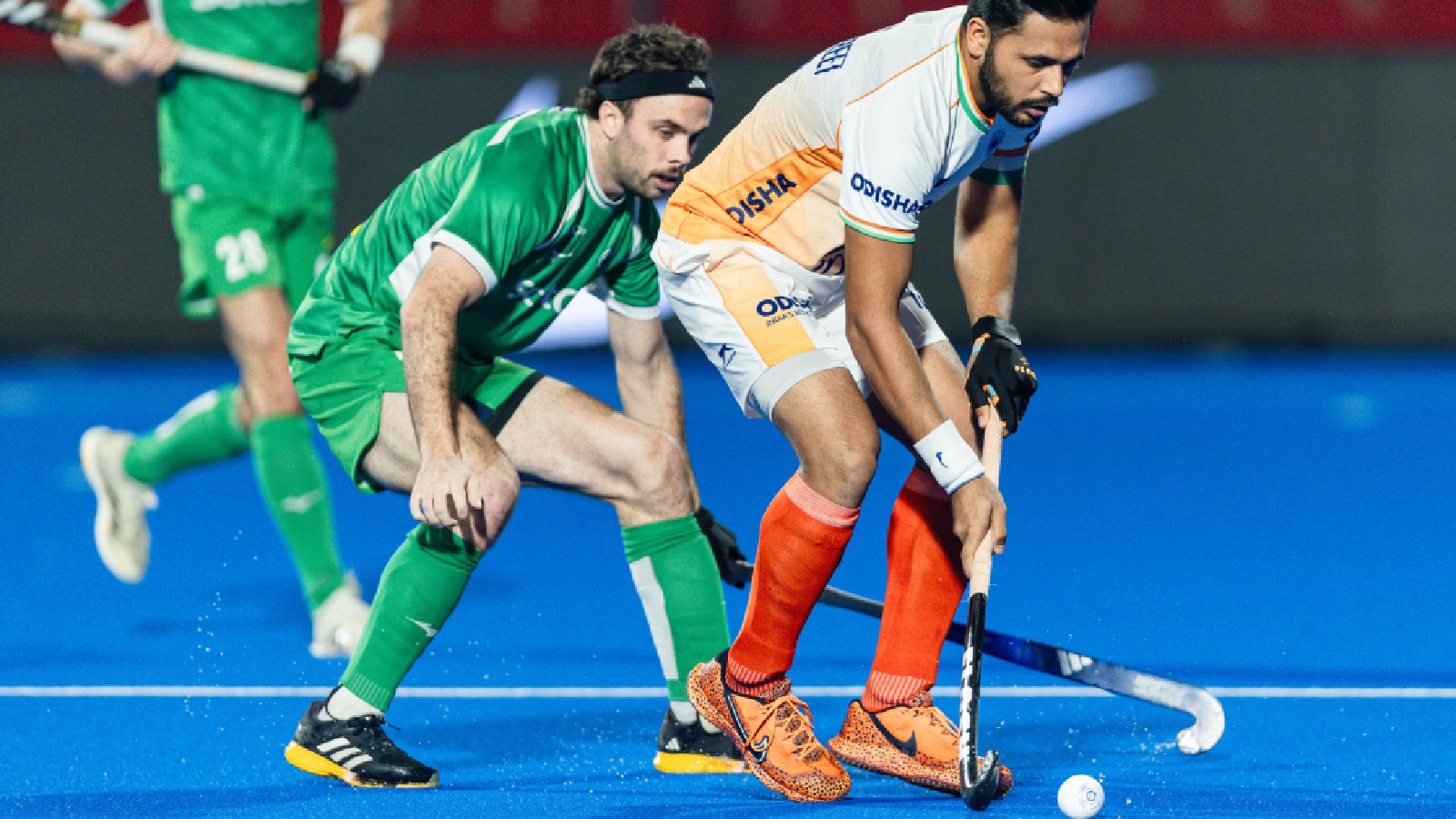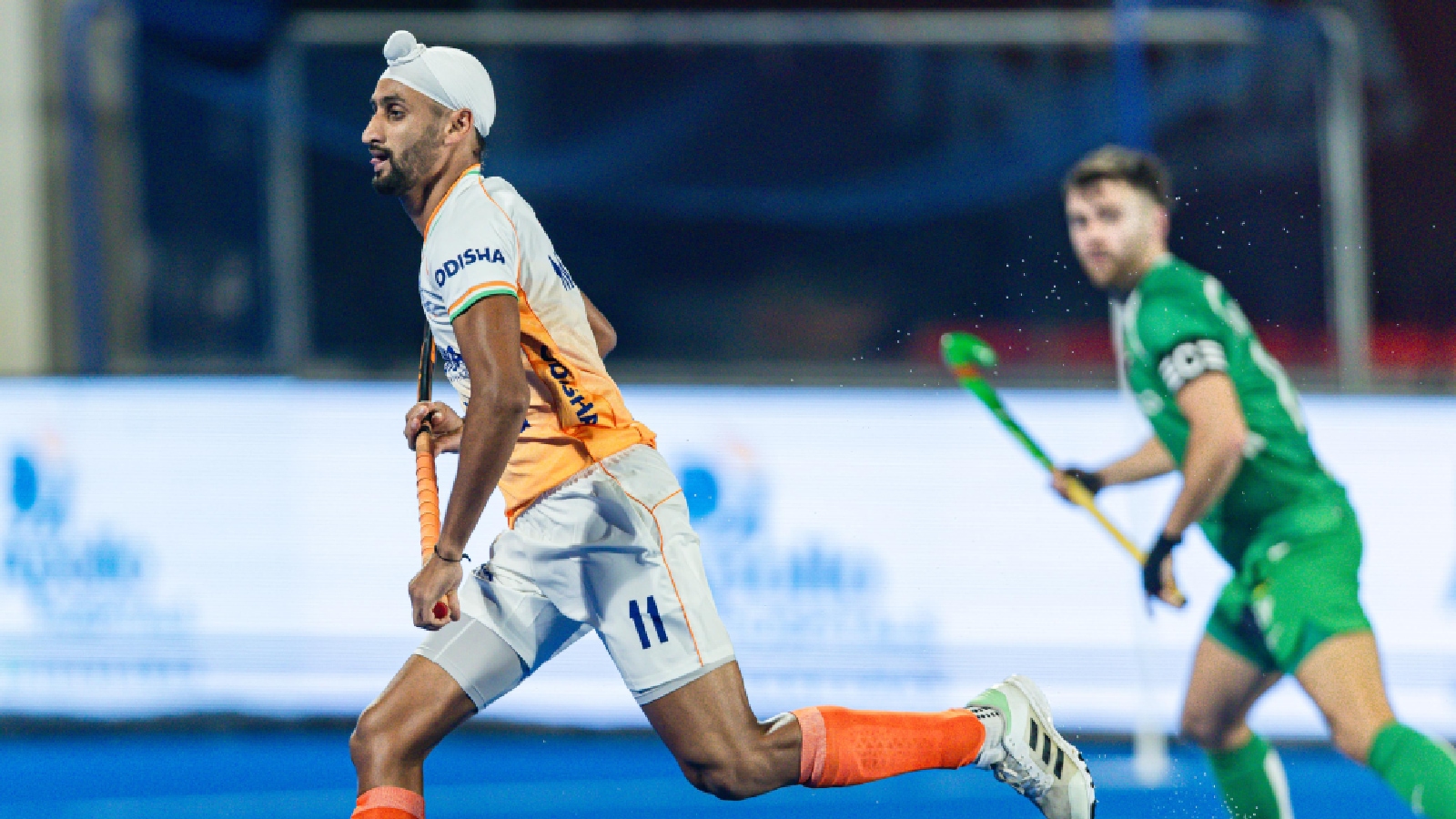Three minutes into the match, when Uttam Singh sprinted from the dugout to the central attacking zone close to Ireland’s ‘D’, he became the 25th player to play for India in the five FIH Pro League matches so far this season.
As the tournament progresses, this stat might be reduced to a footnote. But it is hard to ignore the bigger picture as it unfolds. For a team plagued for decades by short-termism, trying more than two dozen players in a competition on home soil marks an important shift in mindset.
In an earlier era, India — obsessed with results — would unleash all their might against experimental teams in even the most inconsequential tournaments. Now, with the cushion of back-to-back Olympic medals, India is one of the experimental teams in a competition, planning for the future rather than being stuck in the present.
It’s a part of coach Craig Fulton’s four-year plan — to gradually phase out seniors who might not last the full cycle until the 2028 Los Angeles Olympics and ensure that the ones coming in get enough matches to fill the void created.
The signs can be seen wherever one looks on the pitch.
As Uttam scurried around the Irish defence, behind him Rajinder Singh — only 21, like Uttam — showcased his vision and was feeding the forwards with pinpoint passes. Over Rajinder’s left shoulder, 23-year-old defender Yashdeep Siwach mopped up any mess created in front of him with boring efficiency. In goal, Suraj Karkera — who has waited for years to become a regular in the team — went about his job with minimal fuss.
India won the match on Friday, coming back from a goal down to beat Ireland 3-1 with goals from Mandeep Singh, Jarmanpreet Singh and Sukhjeet Singh. But even with a defeat, it is unlikely they are going to waver from this approach.
Story continues below this ad
 Indian hockey team captain Harmanpreet Singh in action against Ireland in the FIH Pro League. (PHOTO: FIH)
Indian hockey team captain Harmanpreet Singh in action against Ireland in the FIH Pro League. (PHOTO: FIH)
After the bronze-medal winning Paris campaign, in a review meeting to discuss the way forward, how to handle the transition was one of the key discussions between the team management and Hockey India.
The project began right away with a tour of the developmental side to the Netherlands. There, a bunch of under-25s — along with senior team vice-captain Hardik Singh, who was recovering from a shoulder injury — played the Dutch, Belgium and a couple of club teams. The destination and opponents weren’t chosen on a whim — in 18 months, the Netherlands and Belgium will host the World Cup, a title India has won just once, 50 years ago.
Crystal ball-gazing
The transition is all the more visible in the forward line.
Among Paris and Tokyo Olympians, three forwards – Mandeep Singh (29), Lalit Upadhyay (30) and Gurjant Singh (29) – will be in their mid-30s by the time the LA Games come calling.
Story continues below this ad
Whether they will last the full cycle is a big question not just in terms of their fitness but also form. While Mandeep (who has scored twice in the last two matches but hadn’t in the 10 before that) and Gurjant have found their scoring touch this week, Lalit’s last international goal came a year ago.
Fulton has been seeking back-ups for them since almost immediately after the Paris Olympics. At the Asian Champions Trophy last September, Uttam was given a chance along with 20-year-old Araijeet Singh Hundal — yet to be used in the Pro League — and Gurjot Singh, only 19.
In the Pro League — the first international assignment since then — Fulton has called up 20-year-old Arshdeep Singh, one of the few talents to have emerged from the Hockey India League. Shilanand Lakra, the speedy forward from Sundergarh, has returned to the squad after two years.
Rajinder is a centre-half like Manpreet and has said that he’ll first target to stay fit until the Asian Games next year and then think about the LA Olympics.
Story continues below this ad
Fulton had hinted earlier that by the time the LA Games come, it might be a new-look India. While that’s the end part of his four-year plan, a crucial mid-section will be the Junior World Cup towards the end of the year.
By exposing the under-21s to high-level senior hockey, Fulton hopes they will be better prepared for the junior championships. They might not necessarily play the main matches, but should be part of the practice games against visiting teams or feature in intra-squad matches.
The Junior World Cup, which India last won in 2016, will be held in Chennai and Madurai in November-December. The nucleus of the 2016 team went on to bring India back onto the Olympic podium five years later, but the title isn’t the only thing on India’s mind — a smooth transition is.
Fulton won’t be the coach at the Junior World Cup, it’ll be PR Sreejesh. But he stresses on the developmental aspect of the competition. “That’s why we brought Arshdeep. That’s why the other two goalkeepers were with us and we played Gurjot in China (in the Asian Championships Trophy). And that’s why we have Hundal,” Fulton says. “So do you see the picture?”

